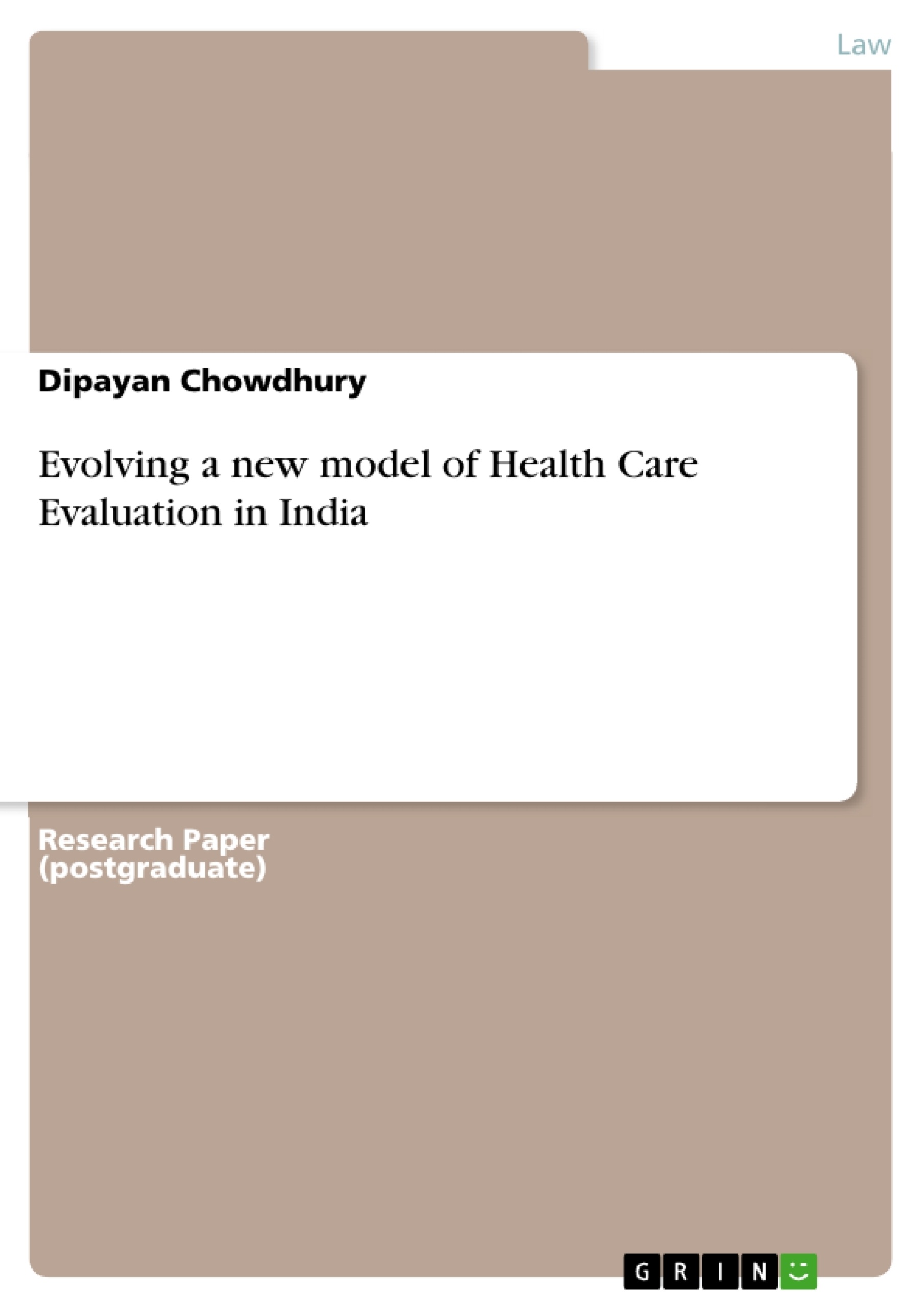This short textbook converted from a research paper was written with the aim of navigating a suitable judicial policy making route for intervention in domains where medical fallacy and the law intersect and, thereby, to give strength to the voice of the common man from a public interest standpoint. The essential study as presented here is specifically in the context of the recent Anuradha Saha judgment, where an astounding eleven crore rupees compensation was awarded to the claimant for the suffering inflicted on his wife that eventually resulted in her tragic demise. The original paper from which this textbook was eventually developed had been presented at the International Conference on Comparative Law and Development in 2014.
Inhaltsverzeichnis (Table of Contents)
- I. Introduction
- II. Revolutionizing the present evidential rule of procedure
- III. De-limiting the patient's right to bodily autonomy
- IV. Re-designing medicinal practice to equitable innovation
- V. Recognizing the need for compliance free package regulations
- VI. Conclusion
Zielsetzung und Themenschwerpunkte (Objectives and Key Themes)
This study aims to analyze the impact of malpractice litigation on health care reform in India, particularly in the context of the Dr. Balram Prasad v. Doctor Kunal Saha & Ors.' judgment. It investigates the interdependence of these two aspects and argues for the adoption of equitable justice as a standard for evaluating patient care in India. The study explores the existing loopholes in the Indian healthcare model and proposes solutions through the adoption of relevant policies and principles.
- The influence of medical malpractice litigation on healthcare reform in India
- The interdependence of policy initiatives and judicial propositions in healthcare
- The need for equitable justice in assessing patient care
- Identifying loopholes in the Indian healthcare model
- Proposing policy solutions for improving healthcare standards in India
Zusammenfassung der Kapitel (Chapter Summaries)
- Chapter I. Introduction: This chapter introduces the study's focus on the evolving landscape of medical malpractice litigation in India, highlighting the challenges of delays, high costs, and inadequate relief for victims. It underscores the influence of English common law on the Indian legal system and explores the emergence of novel principles of medical jurisprudence through judicial interpretations.
- Chapter II. Revolutionizing the present evidential rule of procedure: This chapter delves into the existing rules of evidence in medical malpractice litigation, analyzing their strengths and weaknesses. It examines the impact of these rules on the process of proving negligence and explores potential reforms to streamline the process and ensure fair outcomes.
- Chapter III. De-limiting the patient's right to bodily autonomy: This chapter examines the complex interplay between patient autonomy and medical intervention. It explores the legal framework governing informed consent and the implications of medical errors on patient rights.
- Chapter IV. Re-designing medicinal practice to equitable innovation: This chapter focuses on the need for equitable innovation in medical practice. It analyzes the existing healthcare infrastructure and its limitations, advocating for a more inclusive and equitable approach to patient care.
- Chapter V. Recognizing the need for compliance free package regulations: This chapter addresses the issue of healthcare costs and accessibility. It explores the potential for standardized, affordable healthcare packages that minimize bureaucratic hurdles and ensure accessible quality care.
Schlüsselwörter (Keywords)
This study delves into the key concepts of medical malpractice litigation, health care reform, equitable justice, patient autonomy, informed consent, medico-legal interpretation, healthcare infrastructure, healthcare accessibility, and policy solutions in the context of India's evolving healthcare landscape.
- Citar trabajo
- Dipayan Chowdhury (Autor), 2015, Evolving a new model of Health Care Evaluation in India, Múnich, GRIN Verlag, https://www.grin.com/document/313514



